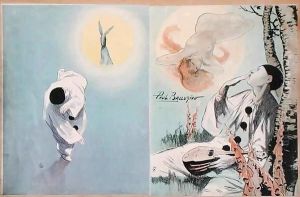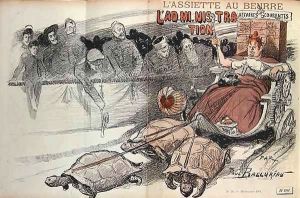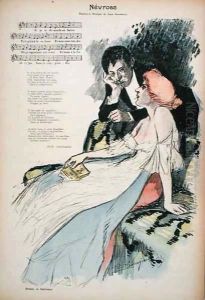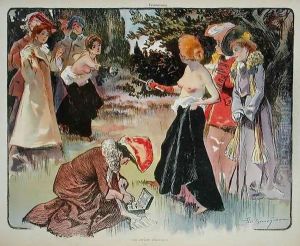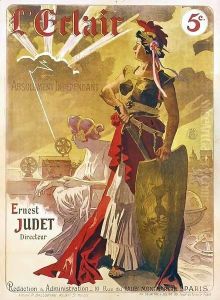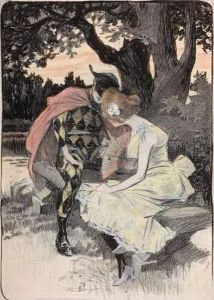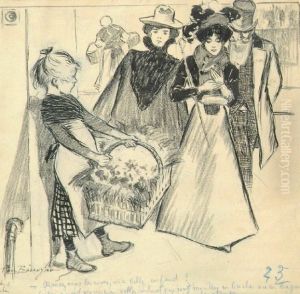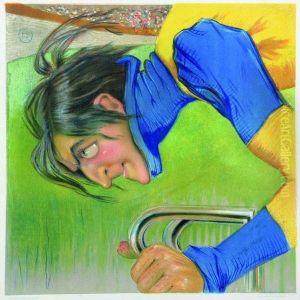Paul Balluriau Paintings
Paul Balluriau was a French artist known for his etchings and illustrations. Born in 1853, he lived through a dynamic period of French art that saw the transition from traditional academic art to the beginnings of modernism. Balluriau was primarily known as an etcher, a form of printmaking that involves using acid to cut into the unprotected parts of a metal surface to create a design in the metal.
Although not as widely recognized as some of his contemporaries, Balluriau's work was appreciated for its attention to detail and its reflection of the everyday life of his time. He was skilled in capturing scenes of the bustling streets of Paris, the daily activities of its citizens, and the changing landscape of the city during the late 19th and early 20th centuries.
During his career, Balluriau contributed illustrations to various publications, which was a common practice for artists seeking to reach a broader audience. His illustrations often accompanied text in magazines, journals, or books, offering a visual complement to the written word. This was a time when the field of illustration was growing in importance, with advances in printing technology allowing for greater distribution and consumption of illustrated materials.
Balluriau's etchings and illustrations remain a valuable record of the social and urban transformation of Paris during his lifetime. His work is part of the larger narrative of French art that includes the impressionist and post-impressionist movements, though he maintained his unique style and did not directly associate with these movements.
Paul Balluriau passed away in 1931, leaving behind a body of work that continues to be studied by art historians and enthusiasts of French art. His etchings, in particular, are sought after by collectors and can be found in various art museums and private collections. Through his art, Balluriau contributed to the rich tapestry of French visual culture during a period of significant change and innovation.
